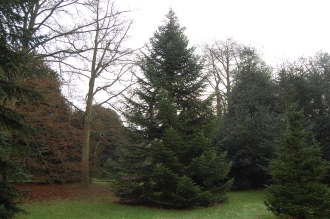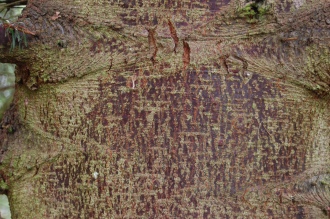Position: Full sun to shade
Flowering period: Spring
Soil: Moist, well drained
Eventual Height: 35m
Eventual Spread: 10m
Hardiness: 1, 2a, 2b, 3a, 3b, 4a, 4b, 5a, 5b, 6a, 6b, 7a, 7b, 8a, 8b
Family: Pinaceae
Abies sibirica is an evergreen coniferous tree with a conical habit. Its grey green aromatic leaves are needle like, flattened with a pointed tip, up to 3cm long and 1.5mm broad. Its trunk may achieve a diameter of up to 50cm. Its grey/ brown bark is smooth. Its male flowers are pale yellow pollen cones. Its fruit are erect cones, up to 9cm long, 3cm broad, blue/ brown when young, maturing brown.
Abies sibirica, commonly known as Siberian Fir, is native to central Russia, west China, Turkestan and Mongolia. In its native habitat it grows in mountainous environments in mixed woodland at an altitude between 1900m – 2400m.
The etymological root of the binomial name Abies is derived from the ancient Latin name for the Fir tree. Sibirica is derived from the Latin meaning ‘from Siberia’.
The landscape architect may find Abies sibirica useful as an attractive ornamental evergreen tree suitable for cold predictable winters. This tree is not tolerant of atmospheric pollution.
Ecologically, Abies sibirica seeds are attractive to some birds.
Abies sibirica prefers moist, fertile, well-drained soils. It will tolerate most pH of soil, although it prefers a slightly acid soil.
Abies sibirica requires little maintenance.








Leave a comment